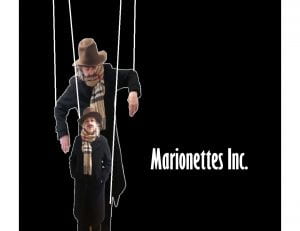Category: English 10
Mind Map – “A Private Experience”
 Loading...
Loading...
Documentary – “21st Century Education”
For this project, my partner, Adrian, and I created an expository documentary about Riverside’s One to One program entitled 21st Century Education. The reason it is expository is because we explain the program, but it has a clear point of view, unlike an observatory documentary. We included interviews from founders of the program, students using the program now, as well as teachers in the school. Some questions we asked were about whether or not they liked the program, what kind of changes were made to put the program into action, and why the program started. We also incorporated narration with an introduction, some background information, smaller introductions for each interviewee, and a conclusion. Another factor of the production was filming B-Roll. For the B-Roll, we mostly walked around the school, asking people’s permission to film them on their devices. We also acquired drone footage from the school by emailing several teachers. Adrian did all of the filming and editing. I made up most of the questions and wrote and recorded the narration. We both worked fairly equally on the Milanote treatment plan separately. We used a Blue Snowball microphone for the interviews and the narration, and Adrian used DaVinci Resolve and Audacity for the editing. All of our information came from the students and teachers that we interviewed. Our “big idea” from the New Media 10 Curriculum is, “Digital Citizens have rights and responsibilities in an increasingly globalized society.” One challenge that we faced was finding good spots to film the interviews so that we would have good audio, then afterwards, syncing the audio to the visuals. In general, the project was difficult but rewarding.
Indigenous Podcast – “Tears of Darkness”
My partner, Adrian, and I created a podcast episode based on the story of a murdered Tlowitsis woman, Angela Williams. We named the podcast Tears of Darkness, and wrote the episode as if it were part of a full podcast with multiple episodes, whose topic was unresolved murders in British Columbia. We included information about her background and early life in the first segment. The second segment was about the details of her death, and the time leading up to her death. We touched on how the case is doing now and how the family was impacted in the third segment. To finish the episode, we included three calls to action from The Truth and Reconciliation Commission of Canada that we thought related to Angela’s story. We completed our research together, then divided the script writing between us. To record, we used a Blue Snowball microphone provided by Vancity. Adrian edited the podcast using Audacity, and we got the music from Bensound. I created the podcast cover using Canva. We used critical thinking to collect information and appropriately present it. We used creative thinking when creating the podcast cover and dealing with music and parts of editing. Overall, I think we both learned a lot about indigenous issues in Canada while doing this project, as well as developing skills that will later be useful.
 Loading...
Loading...
 Loading...
Loading...
Short Story to Screenplay – “Marionettes Inc.”
For this project, I turned the short story Marionettes Inc. by Ray Bradbury into an adapted screenplay. For the adapted screenplay, the writing type was narrative for the most part because it tells a story. However, there were some descriptive elements to it. For example, in the action section of the first scene, I use visual, auditory, and tactile descriptions of the setting of the scene. The screenplay includes slug lines, actions sections, characters, parentheticals, and dialogue. The characters are Braling, Smith, 2nd Braling, Nettie, and Mrs. Braling. The reason I used the name “2nd Braling “ rather than “Braling 2” is because it is easier to have characters with different starting names for the website to automatically predict the characters’ names. For the original short story, I think that it’s also narrative and descriptive for the same reasons as the screenplay. Instead of copying each line of dialogue and adding a few parentheticals, I attempted to paraphrase what the characters were saying, while also shortening the story in general. While completing this assignment, I learned that, while sometimes a little bit tedious if it’s an adapted screenplay, screenplay writing can be very interesting and quite fun. I also learned how to take the main idea of something and put it into my own words more efficiently, which is something we are very often asked to do in school, so that will be useful for me. In general, I enjoyed this project, and I think I got something good out of it.
